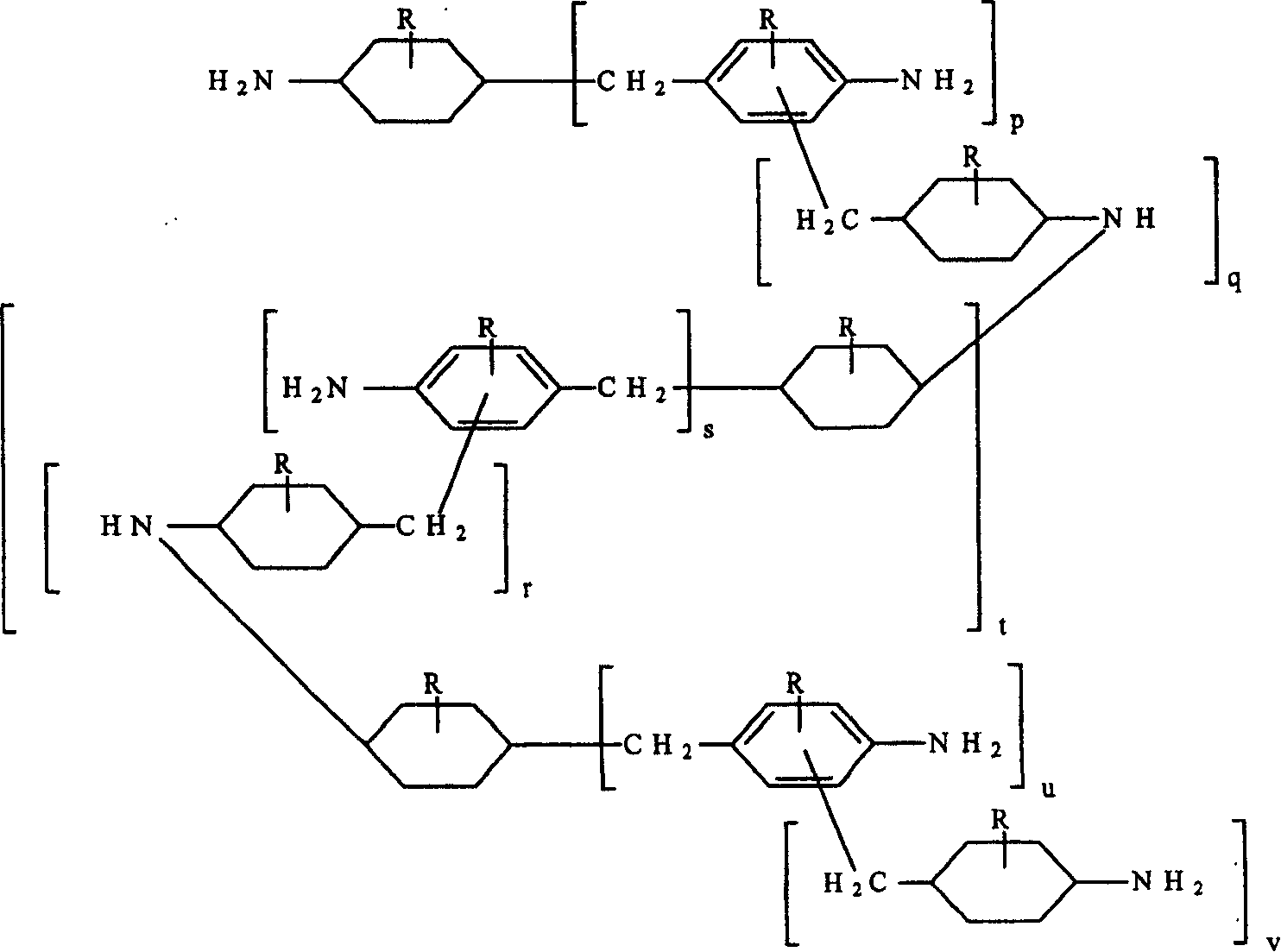Hydrogenation of methane diphenylamine homolog and epoxy resin cured therefrom
A technology of methylene bridging and resin, which is applied in the field of methylene bridging polyamine and its preparation, can solve the problems of long reaction time, unsuitable raw material for hydrogenation of methylene dianiline, low yield, etc., and achieves The effect of excellent thermal performance
- Summary
- Abstract
- Description
- Claims
- Application Information
AI Technical Summary
Problems solved by technology
Method used
Image
Examples
Embodiment 1
[0063] A series of epoxy curing agents are prepared from heavy MPCA raw materials by blending various raw materials. These samples were then compared with MPCA epoxy curing agent, which is based on US 5,280,091.
[0064] Sample 1 was prepared by hydrogenating MDA-50, then removing the 2-ring component, leaving the heavy MPCA as the bottom fraction.
[0065] Sample 2 was prepared by hydrogenating a 1:1 mixture of MDA-85 (15% oligomer) and MDA-50, and then removing the 2-membered ring component, leaving the heavy MPCA as the bottom fraction.
[0066] Sample 3 was prepared from a 1:1 mixture of MDA-85 and MDA-50. After the hydrogenation (going deeper to obtain higher secondary amine components), the 2-membered ring component is removed, and the heavy MPCA remains as the bottom fraction.
[0067] Sample 4 is similar to sample 3, except that there is a higher level of partially hydrogenated methylene diphenylamine (ABCHA) but a lower content of secondary amines.
[0068]Control samples...
PUM
| Property | Measurement | Unit |
|---|---|---|
| glass transition temperature | aaaaa | aaaaa |
| amine value | aaaaa | aaaaa |
Abstract
Description
Claims
Application Information
 Login to View More
Login to View More - R&D
- Intellectual Property
- Life Sciences
- Materials
- Tech Scout
- Unparalleled Data Quality
- Higher Quality Content
- 60% Fewer Hallucinations
Browse by: Latest US Patents, China's latest patents, Technical Efficacy Thesaurus, Application Domain, Technology Topic, Popular Technical Reports.
© 2025 PatSnap. All rights reserved.Legal|Privacy policy|Modern Slavery Act Transparency Statement|Sitemap|About US| Contact US: help@patsnap.com



